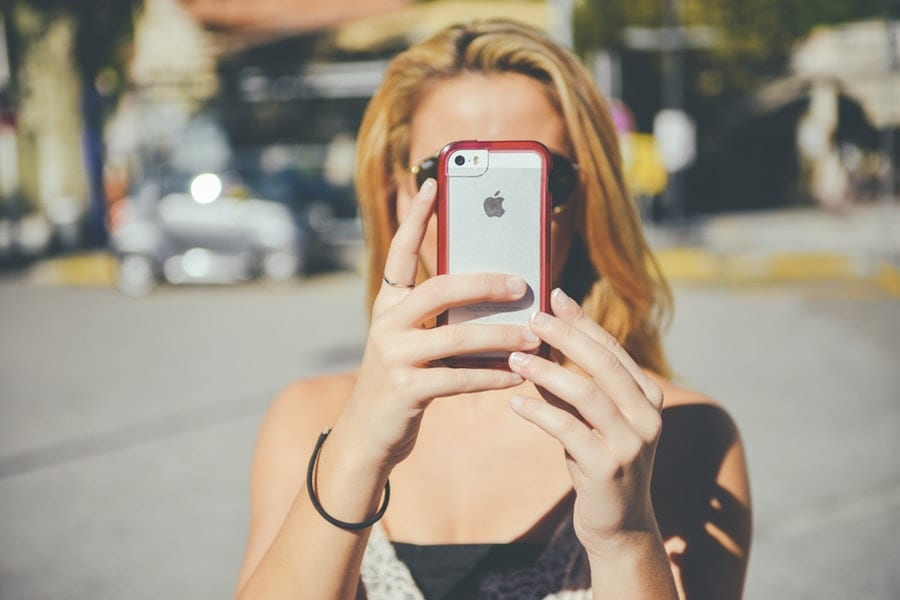As mobile technology moves forward at a breakneck speed, we are presented with new security options. Facial recognition is the latest addition to the arsenal of consumer tech, lauded as the biometric security method of choice.
According to many experts, it is poised to send less sophisticated methods to the graveyard of tech history. Industry giants in the league of Apple have already embraced it and before long, users should too. So, are we really going to bid farewell to unlock patterns, fingertips, and PINs? Is facial recognition really safer?
Promises of a new golden standard
Biometric technology has been around for quite some time. In a nutshell, it uses human physical characteristic to confirm identity. Facial recognition is one of its interactions, alongside iris scans and fingerprints. Back when it was first presented in 2011, it was not sharp enough to become a security standard. Still, its potential for the smartphone market was clear from the get-go.
First off, facial recognition is cool and convenient. Secondly, it promises to eliminate problems associated with unreliable methods such as passwords. And indeed, it is way more secure than its predecessors. Passwords, for instance, can get stolen or forgotten. Moreover, people tend to use weak passwords and databases containing related data are a popular target for hackers.
As for fingerprints, the chances of someone having the same fingerprint as you are estimated to 50,000 to 1. On the other hand, it is claimed that the chances of another person unlocking your phone with his/her face are incredibly slim— 1,000,000 to 1. So, in theory, facial recognition is much safer than fingerprints. In fact, that makes it the safest method there is.
Strengths and weaknesses

But, to really say that without a shadow of a doubt, we have to take a look at its performance in practice.
The pivotal moment for this biometric technology was Apple joining the show. New iPhone X is a flagship device that is spearheading the proliferation of facial recognition. Namely, it introduced Facial ID as a default way to unlock a phone and verify Apple Pay transactions. This coveted feature would become a benchmark against which others would measure their own systems.
Simply put, iPhone face recognition is the best in the market right now. It uses cutting-edge infrared cameras to map 30,000 points on your face and then generate a 3D map of facial topography. It operates in low-light conditions and even allows you to add another face. Natural expressions in a well-lit environment are associated with impressive accuracy rates.
All of this is not to say that facial recognition tech works like a charm. In fact, there are some major deficiencies that will have to be addressed. Facial recognition on iPhone X may be hard to hack, but on Android devices, it is way less impressive.
There have been instances of spoofing the system using videos or photos of a user’s face. That is exactly what happened to Samsung’s Galaxy S8 and Galaxy Note8 that used the system called Iris unlock. And even the sturdiest facial recognition biometrics can be deceived with 3D masks. It is unlikely that fraudsters would employ these advanced tactics, but it is a risk we need to recognize.
Still a long way to go

Better hardware and software are the best response to the aforementioned problems. We hope to see newer models featuring built-in spoof-detection methods and users adopting multi-factor authentication. What is more, we need to ensure that user biometric details are not stored anywhere other than their devices.
These steps are the only way to protect our phones and data stored on it. But, there are still major hurdles we have not covered, such as privacy concerns. For instance, you cannot hide your face (unlike passwords) and criminals can take advantage of this to forward their schemes. This is, of course, a matter of regulation and ability of main industry players to raise the bar progressively.
For now, it seems that the benefits outweigh the risks, although not by such a large margin. And besides, we already have to brace ourselves for the mobile world in which facial technology is ubiquitous. It is estimated that by 2020, there will be more than 1 billion phones with integrated facial recognition. So, you might want to come to terms with the future sooner rather than later.
Conclusion
Unlocking your phone by staring directly into it is a welcome novelty, but the million dollar question is whether it boosts our safety or not.
Practice has shown that it is possible to sneak by a biometric defense perimeter. Then again, we have to remember that not all facial recognition technology is created equal. It is only as good as the hardware and software that support it. Apple’s system shows a glimpse of what is possible to achieve and sets the pace for innovation yet to follow.
For the time being, you are better off using facial recognition as one of the multiple security measures instead of it being your only protection against unwanted eyes.






